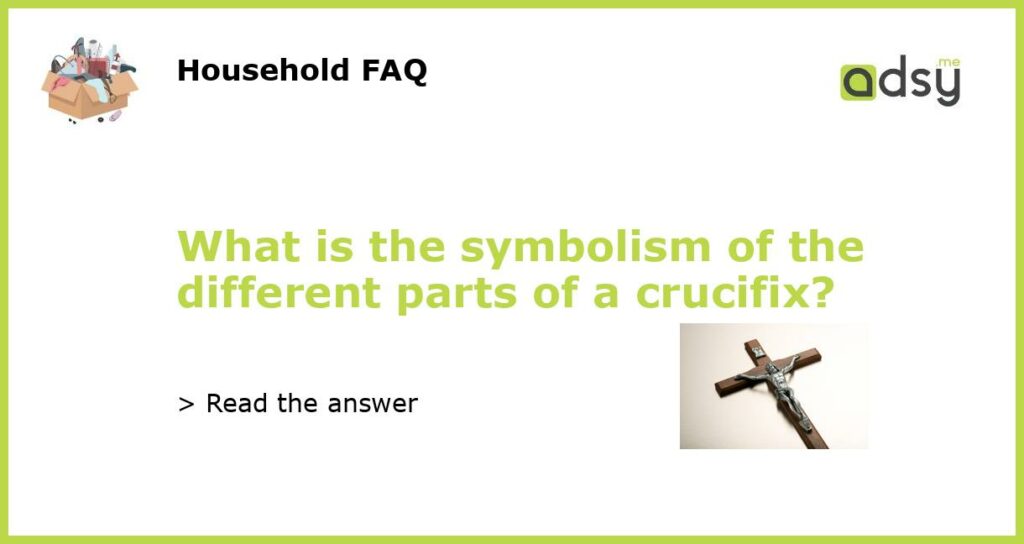The Crucifix and Its Symbolism
A crucifix is a universally recognized symbol of Christianity, depicting the death of Jesus Christ on the cross. It is comprised of various parts, each with a unique significance in Christian tradition. Understanding the symbolism of these parts can deepen our appreciation for the crucifix and what it represents.
The Cross
The most defining feature of a crucifix is the cross. In Christian theology, the cross symbolizes both the suffering of Christ and his triumph over death. The vertical beam represents the eternal, transcendent nature of Christ, while the horizontal beam represents his incarnation and earthly life. Together, they form the cross, which represents the sacrifice and redemption of humanity, through the death and resurrection of Christ.
The Corpus
The corpus, or body of Christ, is affixed to the cross. It is usually depicted as a realistically-sculpted or painted figure that shows the wounds Christ suffered during his crucifixion. This is a reminder of Jesus’ human nature, and of his suffering on behalf of humanity. The figure of Christ on the cross is often accompanied by other symbols, such as a crown of thorns or the INRI inscription, which serve to remind viewers of Christ’s suffering and sacrifice.
The INRI Inscription
The INRI inscription, found on some crucifixes, is an acronym for the Latin phrase “Iesus Nazarenus Rex Iudaeorum,” which translates to “Jesus of Nazareth, King of the Jews.” This phrase was written on the plaque that Pilate ordered to be placed above Jesus’ head during his crucifixion. Including this inscription on a crucifix serves as a reminder both of Jesus’ human identity and of the political and religious context of his persecution and execution.
The Halo and Cross
Some crucifixes include a halo around Christ’s head, which represents his divinity. The halo can be interpreted as a symbol of the Holy Trinity, or as a reminder of the miracle of Christ’s resurrection. Another symbol found on some crucifixes is the cross, which is often placed behind the figure of Christ. This serves as a reminder of the relationship between the crucifixion and resurrection, and of Christ’s triumph over death.
Understanding the symbolism of a crucifix can help us engage more deeply with our faith, and appreciate the rich history and tradition behind this enduring symbol of Christianity.






